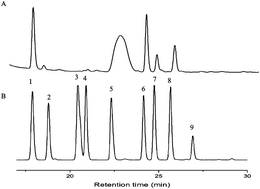Effect of selenium-enriched exopolysaccharide produced by Lactococcus lactis subsp. lactis on signaling molecules in mouse spleen lymphocytes
Abstract
Selenium-enriched

* Corresponding authors
a Food Science & Technology Department, Marine Science School, Ningbo University, Ningbo 315211, Zhejiang, China
b
Food Science & Nutrition Department of Ginling College, Nanjing Normal University, Nanjing 210097, Jiangsu, China
E-mail:
daodongpan@163.com
Fax: +86 574 87608347
Selenium-enriched

 Please wait while we load your content...
Something went wrong. Try again?
Please wait while we load your content...
Something went wrong. Try again?
L. Liu, D. Pan, X. Zeng and H. Li, Food Funct., 2013, 4, 1489 DOI: 10.1039/C3FO60216H
To request permission to reproduce material from this article, please go to the Copyright Clearance Center request page.
If you are an author contributing to an RSC publication, you do not need to request permission provided correct acknowledgement is given.
If you are the author of this article, you do not need to request permission to reproduce figures and diagrams provided correct acknowledgement is given. If you want to reproduce the whole article in a third-party publication (excluding your thesis/dissertation for which permission is not required) please go to the Copyright Clearance Center request page.
Read more about how to correctly acknowledge RSC content.
 Fetching data from CrossRef.
Fetching data from CrossRef.
This may take some time to load.
Loading related content
